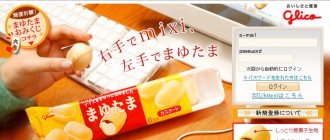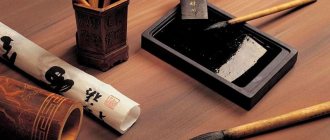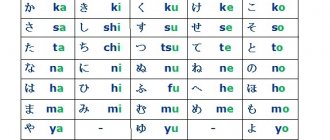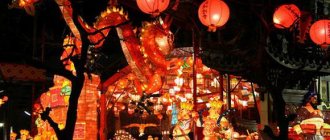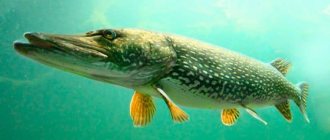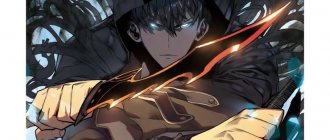Shodo (書道, "Way of Writing") or Japanese calligraphy is the art of fine writing. Like many other Japanese traditions, Shodo has its roots in China. For a long time, the most respected calligrapher in Japan was Wang Xizhi, a 4th-century Chinese calligrapher.
Using only brushes and ink, these calligraphic inscriptions became popular among high-ranking nobles and the Emperor himself.
Good calligraphy is considered an art and requires years of dedicated practice.
Japanese calligraphers created several new styles that are much more simple and emotional. During the Edo period (1600–1868), decorative styles such as kabuki-moji and jo-ruri-moji appeared.
Japanese calligraphy techniques
As we said, early Japanese calligraphy originated from Chinese calligraphy, so many of the principles and techniques are very similar. Main styles of Shodo:
Hieroglyphs of the Zhuanshu seal . This style of writing appeared in the 8th-3rd centuries BC. e. and became the official style in the Zhou and Qin kingdoms.
There are two main versions of it: the “great seal” (dazhuan) and the “small seal”.
Zhuanshu is the most commonly used of the archaic calligraphy styles.
Lishu , formal writing, is a style of Chinese writing, sometimes called zuoshu, or business writing.
This style of writing arose in the second half of the 3rd century BC. e. during the Qin-Han dynasties. Lishu was much
saved time.
This style is distinguished by the square configuration of the hieroglyphs, the characteristic rigidity of the structure of the hieroglyphs and the strict perpendicularity of horizontal and vertical lines. Also, due to saving space on bamboo plates, the width of the hieroglyph prevails here over its length.
The lishu style played an important role in the development of education and science in China.
Kaishu (kǎishū), statutory letter. This writing style originated during the Han Dynasty (206 BC - 220 AD) and flourished during the Tang Dynasty (618-907). The style was directed towards a more standard writing of hieroglyphs.
Due to the fact that kaishu was even more convenient compared to lishu, the style became popular and widespread.
Xingshu (Xíngshū), the “running style” is a historical style of Chinese calligraphy, which has the peculiarity that the features in this style merge with each other. The brush is almost never lifted from the paper. This is the youngest of the styles, originating from Kaishu.
An educated Chinese can read most of the written Xingshu.
Caoshu (cǎoshū) "quick writing" is the general name for the cursive styles used to write Chinese characters.
This style is characterized by simplicity, economy, smoothness, continuity, and as a result, writing becomes much faster than other styles. But such texts are difficult to read for those who are not familiar with tsaoshu. This style exists mainly as a type of shorthand writing or calligraphic style. People who can read standard or printed forms of Chinese characters may not be able to understand this style.
Edomoji is a Japanese calligraphic style invented during the Edo period, intended for advertising and signage.
It is used in China and Korea for Japanese restaurant signs.
Let's write the hieroglyph "one"
Place the brush at an angle of 45 degrees.
It will be written more beautifully this way. We press the brush diagonally and smoothly move it to the right, at the end we press again and release.
This is a simple kanji, but it is quite difficult to write.
Let's try to write again. Look carefully! Press the brush diagonally. Slowly we lead, we lead, and after pressing at the end, we release. It didn't work out very well, let's try again.
Press at an angle of 45 degrees, it is very important to move the brush slowly.
Press at the end and release. I hope you understand how to write the hieroglyph “1”.
Let's move on to the next kanji.
We have already talked about how to hold the brush.
Tools and materials used in Japanese calligraphy
In ancient times, people had to make their own instruments to practice Shodo, but nowadays things have changed.
Now you can find all the necessary accessories in our store. Modern technologies allow you to order everything you need online, and in a short period of time you can try your hand at Japanese calligraphy.
Now let's look at what exactly a Shodo calligraphy set should consist of.
The four most basic instruments have been collectively called the four treasures of the scientist:
So, the first treasure - the Brush - was usually made from animal hair... or from the hair of small children (they said that such brushes brought good luck in imperial exams).
Modern brushes are made mainly from goat, wolf, rabbit, weasel hair, or a combination of them.
The hair is painstakingly sorted by softness, hardness, thickness and length. Real, professional brushes are assembled by hand.
Different brushes are used for different styles of calligraphy and writing.
Washi paper (和紙, washi) is Japanese paper . It is made from fibers from the bark of the gampi tree through a long and complex process. Cheaper grades of paper can be made from bamboo, hemp, rice and wheat.
Washi paper is characterized by its uneven texture and white color.
This paper is also so durable that it was used to make various everyday items such as clothing, household items, toys, as well as robes and ritual items for priests and Buddha statues. And during World War II, washi paper was used to make shells for bomber balloons launched across the Pacific Ocean to the United States.
Nowadays, washi is used mainly for Japanese calligraphy.
The third jewel of a scientist is Mascara. Japanese calligraphy and painting traditionally use hard, dry ink.
Mascara is made mainly from soot and animal glue, sometimes with the addition of incense.
In order to make mascara, you need to grind the mascara stick and mix it with a small amount of water to get a dark liquid. Artists and calligraphers can vary the concentration of the resulting ink depending on their preferences by decreasing or increasing the amount of dry ink or water.
The ink stone is the fourth jewel of the scientist; it is used for grinding hard carcass.
Despite the name ink stone, ink stones can be made from materials other than stone, such as porcelain, metal, wood, etc. In noble houses one could find very expensive devices made of crystal, jade, various precious stones, gold and silver.
Scholar's Jewels
This is what the tools for Chinese calligraphy are called - brush, paper, ink and ink pot. These four subjects are necessary for every educated person living in China. With the help of these accessories it is possible to achieve special expressiveness of Chinese calligraphy.
Brush
The capabilities of the brush are much richer than the capabilities of ballpoint and fountain pens regarding the graphic part.
The brushes that are used nowadays are of three types, depending on the materials from which they are made: yanghao, lanhao and zihao.
- Yanhao - brushes made from goat hair. These brushes are very soft and flexible.
- Lanhao are also called “wolf hair” brushes, although in fact the material for their manufacture is the wool of a small animal called kolonok. These brushes are more rigid than yanghao and are used for writing fine lines.
- Zihao are called “purple hair” and are made from rabbit hair. The clarity of the lines is a characteristic feature of these brushes.
In special cases, in order to give balance to the properties of the brush, a combined brush made from the hair of two animals is used. Such brushes are called jianhzuo. Experienced calligraphers have several different types of brushes at their disposal.
Tushka
An ink pot is a must-have attribute for a calligrapher; it is made primarily of stone, which makes it durable. Quite often, the ink plant was passed down from generation to generation. The stone should be made of fine-grained rock, such that it will not damage the brush, but at the same time hard enough to grind the mascara.
Mascara
Mascara is made using soot based glue.
The choice of ink should be approached thoroughly, because the quality of writing depends on it. A good mascara should be bright black without any impurities.
Paper
Many credit Cai Lun, who lived during the Eastern Han Dynasty, as the inventor who discovered the much-needed item.
Xuanzhi is a special type of bamboo paper that is used for Chinese calligraphy. This paper is handmade and is very soft and flexible, making it highly prized by calligraphers. Its properties fully meet the requirements of Chinese painting.
Not everyone has the opportunity to purchase special bamboo paper; in this case, at first, paper with similar absorbent properties will be suitable. Beginners often use newsprint at first.
Shodo and Zen Buddhism
Japanese calligraphy has been greatly influenced by the aesthetics and practices of Zen Buddhism. It is based on principles that emphasize connection with the spiritual rather than the physical. In Zen it is also a means of meditation. Therefore, shodo is often used in Zen monasteries.
Anyone who practices Japanese calligraphy knows that brush verticality, hand position, ink preparation, brushwork, and concentration on what is coming out on the paper are key elements in writing good calligraphy.
To write Zen calligraphy masterfully, you need to clear your mind and let the characters flow out of you, rather than practice and make great effort. The Japanese philosopher Nishida Kitaro called this state Mushin (mindless).
The same article... about Japan, calligraphy and its benefits⠀
In the 80s, the largest Japanese company engaged in the production of consumer and professional electronics, starting to move to nanotechnology, conducted an interesting experiment in many countries. We were looking for what methods could be used in a given region and in a given culture to train specialists of the future in different directions.
The program lasted a long time. It was funded for more than 10 years. When the data was collected, the organizers of the experiment were shocked. Calligraphy met all the requirements to the greatest extent. Therefore, the company recommended introducing calligraphy from 1st to 11th grade in all schools and universities, regardless of the specialization of the educational institution. To form the very qualities necessary for future specialists in the field of innovative technologies.
Here is another interesting fact from modern Japanese life. Many large companies in Japan invite teachers (sensei) during their lunch breaks, who teach calligraphy to their employees for half an hour a day. Company managers consider this very expensive activity useful not only for health, but also for developing the creative potential of specialists. And no one can argue with the fact that the Japanese are the most efficient nation, and also the most advanced and creative in the field of innovative developments.
Of course, the merit here is not only calligraphy. But it is quite obvious that this is a consequence of the Japanese people’s careful attitude towards their history, traditions and roots, the spiritual and physical health of the nation. Chinese experts reveal this topic from an even more unexpected perspective. In his article “Calligraphy and Health,” Yuan Pu, an associate professor at the Beijing Institute of Graphic Communication, talks about the effect of calligraphy on brain activity in general and even on life expectancy.
It is believed that of all types of voluntary actions, the act of writing is the most complex and time-consuming. The position of the fingers, palm and wrist for the correct grip of the pen, the correct position of the wrist and arm in the air when writing, the movement of the pen - all this not only trains the arm muscles and nerves, but also affects all parts of the body: fingers, shoulders, back and legs. Calligraphy exercises are essentially reminiscent of qigong gymnastics, which “changes the physique, moves the joints.” This process affects mental and physical health, develops the finest muscles of the hands, stimulates brain function and imagination.
The process of writing also restores breathing. Calligraphy makes the right brain lobe feel the correctness of lines, symmetry structure, rhythm and pace, develops attentiveness, observation and imagination. Yuan Pu came to the conclusion that students who study calligraphy perceive and remember information much faster than others. And the fact that calligraphy prolongs life is a scientifically proven fact. Modern calligrapher Su Zuxian lived to be 110 years old, Dong Shuping lived to be 94 years old. The creator of the font, Qi Gong, a modern calligrapher and former member of the Chinese Calligraphers Association, lived to be 95 years old.
Japanese calligraphy today
Today, one of the leading associations in the field of Japanese calligraphy is the Association of Masters of Modern Calligraphy, which was founded in 1948.
In modern Japan, Shodo is a popular class for elementary schools. Many parents believe that children's determination and stillness while practicing calligraphy develop useful skills. In high school, calligraphy is one of the arts subjects, along with music or painting.
Some universities, such as the University of Tsukuba, Tokyo Gakugei University, and Fukuoka University of Education, have dedicated calligraphy departments that emphasize teaching programs in Shodo calligraphy.
Educational tours to Japan: Japanese language, studying in Japan, Japanese language courses in Japan.
It’s spring, the school year is coming to an end, the material of the next textbook has been covered, control and distribution tests have been passed, but there is still a whole week of classes left before the holidays. It seems that we can relax, but that was not the case: every day the teachers prepare for us not only interesting material for practical classes, but also try to introduce us to the culture and way of life of modern Japan.
The day before hour X, the teachers intrigued the whole class by asking them to come to class in clothes that they didn’t mind getting dirty. For some reason, thoughts about Zarnitsa first flashed through my head: navigating the terrain, overcoming an obstacle course... The active school and student life in Russia prepared me for any such surprises. But the next day, seeing writing instruments on the tables, I breathed out a sigh of relief and joy.
This calligraphy lesson was my first. Therefore, I listened to the teacher’s instructions and comments very carefully. The names of the tools and materials helped me remember small cheat sheets prepared in advance by the teacher. But the styles of writing hieroglyphs for me that day mixed into a large and somewhat frightening lump in its size. I’m not kidding, it turns out there are a huge number of them! For laymen like me, it is enough to remember only three: kaisho (the characters are similar to printed ones), gyosho (“semi-cursive”, the elements of the hieroglyphs are smoothly connected, rounded) and sosho (“cursive”, in my opinion, the signs look more like abstract paintings , than on hieroglyphs).
Fortunately, we started with the simplest spelling - kaisho. After listening to the detailed instructions, preparing the workplace and choosing a word or phrase to write, we began to work. I had to rack my brains choosing words, because here everything is given meaning. You can’t just write “Mail” or “Borodinsky Bread”; you need to choose a word or phrase with a deep meaning. My choice fell on the words “Victory” and “Dream”, and my classmates wrote “Home”, “Love”, “Friends” and even “Demon”.
The very first to confidently take up a brush was the Chinese woman Ning-san, who learned all the intricacies of working with ink back in elementary school. Looking at her precise and beautiful movements, we also began to “create.” Slanting lines of varying thickness and intensity, streaks of ink, blots... My first work can easily be used instead of a poster for some Japanese horror film. But after a little practice it turned out quite acceptable. It was fun not only to draw, but also to watch the efforts of those around me.
After two hours, we received more than twenty magnificent (from the point of view of the “creators” and the generous sensei) works and slightly stained with ink, but satisfied faces of the students.
This way we managed to diversify a regular day at school. It’s very nice that the sensei arranges such classes for us from time to time!
"Four Jewels of the Cabinet"
This is how calligraphy masters respectfully called the four main “tools” of ancient China. The craftsmen paid great attention to the selection and careful use of these items. These are: 1. Brush . 2. Inkwell . 3. Mascara . 4. Calligraphy paper
Masters of calligraphy in modern Japan, where this ancient art has found a new lease of life, use the following six items:
- Shitajiki : black, soft mat.
- Buntin : a metal used to press down paper while writing.
- Hansi : A special, thin writing paper traditionally made from rice straw. This is usually Washi , a traditional handmade Japanese paper.
- Fude : brush. There is a large brush for writing large characters and a small one for writing the artist's name.
- Suzuri : heavy, black ink container.
- Sumi : “writing ink” is a hard black material into which water is rubbed to produce ink, into which a brush is then dipped.
Mastering calligraphy includes: 1) learning the basic skills of writing in different stylistic manners; 2) the history of calligraphy and the theory of hieroglyphs; 3) acquaintance with traditional Japanese culture and language through calligraphy.
